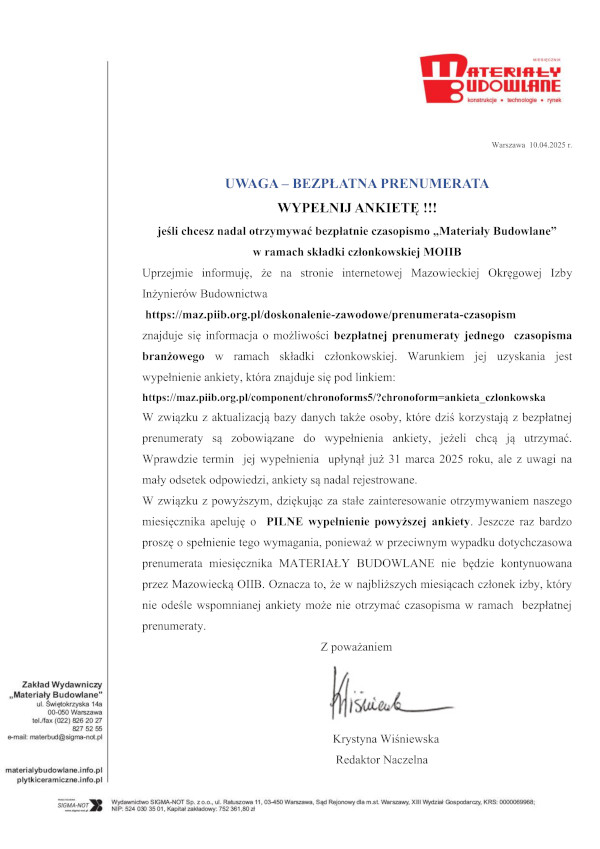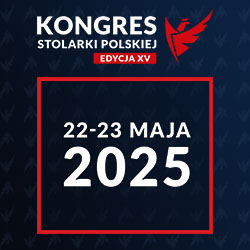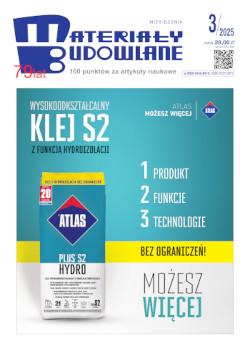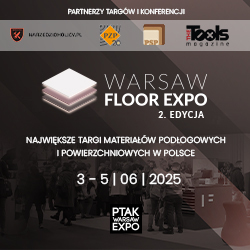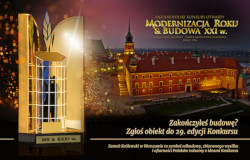Open Access (Artykuł w pliku PDF)
Analysis of overheating cases of apartments on the top floor in buildings in traditional technology
dr inż. Iwona Pokorska-Silva, Politechnika Śląska, Wydział Budownictwa
ORCID: 0000-0003-0895-6587
dr hab. inż. Artur Nowoświat, prof. PŚ., Politechnika Śląska, Wydział Budownictwa
ORCID: 0000-0002-0277-7388
Adres do korespondencji: Ten adres pocztowy jest chroniony przed spamowaniem. Aby go zobaczyć, konieczne jest włączenie w przeglądarce obsługi JavaScript.
DOI: 10.15199/33.2023.11.05
Studium przypadku
Streszczenie. Przegrzewanie pomieszczeń ostatniej kondygnacji sprawia, że komfort cieplny nie jest zachowany. W krajach takich jak Polska, gdzie nie używa się powszechnie klimatyzacji, problem ten jest szczególnie widoczny. W celu jego dokładnego zbadania wykonano w okresie letnim pomiary temperatury w pomieszczeniach budynków mieszkalnych wybudowanych w technologii tradycyjnej. Badania te potwierdziły problem przegrzewania tych pomieszczeń, dlatego też analizowano rozkład temperatury w miesiącach letnich w pomieszczeniach poddasza i niższych kondygnacji. Przeprowadzono również pomiar temperatury oraz symulacje numeryczne w budynku testowym. Ponadto wykazano wpływ wskaźnika utrzymania ciepła na średnią, maksymalną i minimalną temperaturę w pomieszczeniach. Za pomocą symulacji w ESP-r pokazano wpływ wskaźnika utrzymania ciepła na rozrzut wyników, gdyż okazuje się, że im większa jest jego wartość, tym rozrzut temperatury w ciągu doby jest mniejszy.
Słowa kluczowe: komfort cieplny; przegrzewanie mieszkań; rozkład temperatury; wskaźnik trzymania ciepła.
Abstract. It is commonly known that thermal comfort in the rooms on top floors is interrelatedwith their overheating. In regions (such as Poland) where air conditioning is not widely used, this problem is particularly evident. In order to thoroughly examine it, temperature measurements were made in the summer period. The measurements were made in the living quarters of buildings constructed in a traditional technology. The tests carried out confirmed that the top-floor rooms were subject to overheating. Therefore, the analysis involved also temperature distribution during the summermonths both for attic rooms and rooms on lower floors. Temperature measurement and numerical measurement were also carried out in the test building. Moreover, the impact of the heat retention rate on the average, maximum, and minimum roomtemperatureswas determined. First of all, using the simulation in ESP-r, the impact of heat retention rate on the scatter of results was demonstrated, since it turns out that the higher the value of heat retention rate, the smaller the temperature spread during the day.
Keywords: thermal comfort; overheating of apartments; temperature distribution; heat retention index.
Literatura
[1] Karimimoshaver M, Samadpour Shahrak M. The effect of height and orientation of buildings on thermal comfort. Sustainable Cities and Society. 2022; 79, 103720.
[2] Teleghani M, Berardi U. The effect of pavement characteristics on pedestrians’ thermal comfort in Toronto. Urban Climate. 2018; 24: 449 – 459.
[3] Wai KM, Yuan C, Lai A, Peter KN. Relationship between pedestrian-level outdoor thermal comfort and building morphology in a high-density city. Science of the Total Environment. 2020; 708,134516.
[4] Chai J, Fan J. Advanced thermal regulating materials and systems for energy saving and thermal comfort in buildings. Materials Today Energy. 2022; 24,100925.
[5] Zhang S, Cheng Y, Fang Z, Huan C, Lin Z. Optimization of room air temperature in stratum- -ventilated rooms for both, thermal comfort and energy saving.Appl. Energy. 2017; 204: 420 – 431.
[6] Hsu PC, Song AY, Catrysse PB, Liu C, Peng YC, Xie J, Fan SH, Cui Y. Radiative human body cooling by nanoporous polyethylene textile. Science. 2016; 353: 1019 – 1023.
[7] Kaczmarczyk J, Melikov A, Fanger PO. Human response to personalized ventilation and mixing ventilation. Indoor Air. 2004; 14: 17 – 29.
[8] Pokorska-Silva I, Nowoświat A, Fedorowicz L. Identification of thermal parameters of a building envelope based on the cooling process of a building object. Journal of Building Physics. 2020; 43 (6): 503 – 527.
[9] Sozer H. Improving energy efficiency through the design of the building envelope. Build. Environ. 2010; 45: 2581 – 2593.
[10] Wieprzkowicz A, Heim D. Energy performance of dynamic thermal insulation built in the experimental façade system. Management of Environmental Quality: An International Journal. 2016: 27 (6): 681 – 694.
[11] Pásztory Z. An overview of factors influencing thermal conductivity of building insulation materials. Journal of Building Engineering. 2021; 44,1026034.
[12] Nowoświat A, Pokorska-Silva, I. The influence of thermal mass on the cooling off process of buildings. Periodica Polytechnica Civil Engineering 2018, 62 (1), pp. 173 – 179.
[13] Nowoświat A, Krause P, Miros A. Properties of expanded graphite polystyrene damaged by the impact of solar radiation. Journal of Building Engineering. 2021; 34, 101920.
[14] Heim D. Phase-change material modeling within whole building dynamic simulation.ASHRAE Transactions. 2006; 12 (1): 518 – 525.
[15] Al-Yasiri Q, Szabó M. Energetic and thermal comfort assessment of phase changematerial passively incorporated building envelope in severe hot Climate: An experimental study. Applied Energy. 2022; 314,118957.
[16] Bojić M, Loveday D. The influence of building thermal behavior on the insulation/masonry distribution in a three-layered construction. Energy and Building. 1997; 26: 153 – 157.
[17] Pokorska-Silva I, Kadela M, Orlik-Kożdoń B, Fedorowicz L, Calculation of building heat losses through slab-on-ground structures based on soil temperature measured in situ. Energies. 2022; 15 (1), 114.
[18] Krause P, Nowoświat A, Pawłowski K. The impact of internal insulation on heat transport through the wall: Case Study. Applied Science. 2020; 10, 7484.
[19] Fanger PO. Thermal comfort; Analysis and applications in environmental engineering.Danish Technical Press. Copenhagen, Denmark. 1970.
[20] D’Ambrosio Alfano FR, Olesen BW, Palaella BI, Riccio G. Thermal comfort: design and assessment for energy saving. Energy and Building. 2014; 81: 326 – 336.
[21] Amoabeng KO, Opoku R, Boahen S, Obeng GY.Analysis of indoor set-point temperature of split- -typeACs on thermal comfort and energy savings for office buildings in hot-humid climates. Energy and Built Environment. 2022; 4 (3): 368 – 376.
[22] Rincón L, Carrobè A, Martorell I, Medrano M. Improving thermal comfort of earthen dwellings in Sub-SaharanAfrica with passive design. Journal of Building Engineering. 2019; 24, 100732.
[23] Hema C, Messan A, Lawane A, Van Moeseke G. Impact of the design of walls of compressed earth blocks on the thermal comfort of housing in hot climate. Buildings. 2020; 10 (9), 157.
[24] Mascaraque MAM, Z Pascual FJC, Andreu VP, Guenot GAG. Evaluation of the thermal comfort and energy demand in a building with rammed earth walls in Spain: influence of the use of in situmeasured thermal conductivity and estimated values. Buildings. 2021; 11 (12), 635.
[25] Czajkowski Kuźniak Architekci. Projekt rozbudowy i przebudowy budynku jednorodzinnego. 2019.
[26] Clarke JA. Energy Simulation in Building Design. 2nd ed. Oxford, UK: Butterworth-Heinemann. 2001.
[27] PN-EN ISO 6946:2017-10. Komponenty budowlane i elementy budynku –Opór cieplny i współczynnik przenikania ciepła –Metody obliczania.
[28] PN-EN 12524:2003.Materiały i wyroby budowlane – Właściwości cieplno-wilgotnościowe – Stabelaryzowane wartości obliczeniowe.
[29] Kozłowska-Szczęsna T, Błażejczyk K, Krawczyk B. Human bioclimatology. Methods and their application in research on the bioclimate of Poland. Warszawa. Polish Academy of Sciences. Institute of Geography and Spatial Organization. 1997.
[30] Błażejczyk K, Kunert A. Bioclimatic principles of recreation and tourism in Poland. 2nd ed. Warszawa, Polish Academy of Sciences. Institute of Geography and Spatial Organization. 2011.
[31] EN 15251:2007. Indoor environmental input parameters for design and assessment of energy performance of buildings ad-dressing indoor air quality, thermal environment, lighting and acoustics.
[32] Al-Yasiri Q., Szabó M. Incorporation of phase change materials into building envelope for thermal comfort and energy saving: A comprehensive analysis. Journal of Building Enggineering. 2021, Vol. 36, 102122.
Przyjęto do druku: 18.10.2023 r.
Materiały Budowlane 11/2023, strona 21-27 (spis treści >>)


